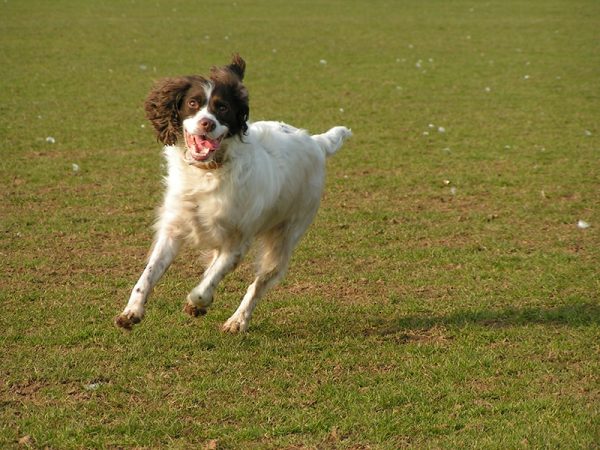In this article
View 8 More +The German Pinscher is an old German breed with a history as a dedicated working dog. They are known for their high intelligence and graceful appearance. With a medium build and strong sense of loyalty, German Pinschers make faithful canine companions or working dogs. This breed tends to have strong personalities that make them a better fit for experienced dog owners with a good knowledge of the breed.
Breed Overview
Height:
17–20 inches
Weight:
25–45 pounds
Lifespan:
12–14 years
Colors:
Black, fawn, tan, and red
Suitable for:
Active families with older children looking for an energetic companion
Temperament:
Loyal, confident, protective, energetic, intelligent, stubborn, alert
German Pinschers have elegant features, with lean bodies, thin legs, and pointed faces. Adults generally stand at about 17 to 20 inches tall and can weigh up to 45 pounds. They have sleek coats available in several breed-standard colors, namely black, fawn, and red.
German Pinschers closely resemble a similar breed, the Doberman Pinscher, although they should not be confused. The two breeds can be told apart by their size, as German Pinschers are significantly smaller.
If you are lucky enough to welcome a German Pinscher into your family, you will be pleasantly surprised by the breed’s high intelligence, unconditional loyalty, and confidence.
German Pinscher Characteristics

German Pinscher Puppies

German Pinschers are most popular in their land of origin, Germany. They are rarer in North America and many other parts of the world. Although it is possible to come across a German Pinscher up for adoption or rehoming, it’s not a usual occurrence. Regardless, you should still check with your local shelters or rescues to see if they have a German Pinscher up for adoption.
If you don’t come right with the adoption route, then a reputable breeder is your next option. It’s essential to choose a German Pinscher breeder who is knowledgeable about the breed and the importance of ethical breeding.
Once you have acquired a German Pinscher puppy, you will almost immediately see the breed’s fantastic traits start to show. German Pinscher puppies are lively and active and will enjoy playing and exploring more than they do napping.
They won’t bore you with their eagerness to run around and chase things but can be stubborn when it comes to training. To prevent unwanted behaviors and to help them become more sociable, it is important to focus on training and socializing this breed from a young age.
German Pinscher Origin & History
German Pinschers are an ancient breed originating from Germany during the 19th century. They were originally developed to be farm dogs and would protect stables and keep them free of vermin.
The now-extinct Rat Pinscher is thought to have contributed to the development of the German Pinscher. German Pinschers have a strong desire to hunt, which is a trait that has stayed with the breed up until now because of their hunting background. Some of the earliest German records of the breed date to 1885 where they were listed as smooth-coated Pinschers.
The German Pinscher is believed to be the foundation breed for Doberman Pinschers and Miniature Pinschers.


Temperament & Intelligence of the German Pinscher 🧠
German Pinschers have strong temperaments with traits that make them both loyal companions and dedicated working dogs. Owners of this breed commonly describe them as confident, alert, protective, and energetic.
They can be stubborn at times, which could make training a bit challenging but not impossible thanks to their high intelligence. This breed is usually protective of their families, which can make them vigilant watchdogs.
German Pinschers can be independent and don’t mind doing their own thing. However, they will never pass up an opportunity to cuddle up to their owners.
Are These Dogs Good for Families? 🏡
German Pinschers can be great family dogs with older children and active lifestyles. They will fit in well with families that can regularly exercise them and provide them with plenty of mental stimulation. They can be cautious about strangers and very protective of their families but become very loving towards close family members.
German Pinschers get along better with older children who know how to handle dogs.

Does This Breed Get Along with Other Pets? 🐶 😽
German Pinschers generally get along with other dogs if they have been properly socialized from a young age. This breed is not very sociable and doesn’t enjoy unfamiliar pets in their space. German Pinschers can be standoffish towards cats and need to be socialized with them from a young age so that they can get along in a home.
This breed doesn’t get along with small pets such as rodents because of their high prey drive. They will try to chase and hunt smaller pets and need to be kept away from them if they do share a home.

Things to Know When Owning a German Pinscher:
Food & Diet Requirements 🦴
German Pinschers should eat a balanced diet with quality ingredients. There are a variety of commercial dog foods that are suitable for this breed as long as it has all the nutrients they need to be healthy. German Pinschers can eat both wet and dry foods if it has a balance of protein, carbohydrates, fats, and minerals.
German Pinscher puppies below a year of age can eat up to four meals in a day, but adults only need to eat two to three times a day. You can feed them in a slow feeder bowl if you find that they gobble down their food too quickly.
Exercise 🐕
Exercise is crucial for German Pinschers because they are a high-energy breed that benefits from plenty of exercise. They should exercise for at least 1–2 hours a day, which can be from walks, runs, hiking, or playtime in a dog park. You do not have to cram all of their exercise into one session and can do it throughout the day instead. For example, you could take them for an early morning walk and then later play a game of fetch with them in the dog park.

Training 🦮
German Pinschers can be trained using a consistent training approach. They can be stubborn and territorial, which can interfere with training. You ideally want to use positive reinforcement and spread out the training sessions throughout the day. German Pinschers may get bored of training if the sessions are too long or inconsistent.
As a highly intelligent breed, German Pinschers often excel at agility, obedience, and rally training.
Grooming ✂️
This breed has minimal grooming requirements, and their short, sleek coats are easy to manage. You can use a soft-bristled brush a few times a week to help remove any loose hair. Furthermore, this breed needs their ears cleaned and nails trimmed too.
This breed doesn’t need to be bathed often unless their lifestyle makes them dirty easily. If you do bathe them, you should use a mild cleansing shampoo that doesn’t irritate their skin. You do not necessarily need to follow up with a conditioner as it can leave their coat feeling greasy.

Health and Conditions ❤️
German Pinschers are a relatively healthy breed, but they still may suffer from certain health issues.
- Eye conditions (cataracts and corneal dystrophy)
- Skin allergies
- Hip dysplasia
- Von Willebrand disease (vWD)
- Thyroid disease

Male vs Female
Both sexes share similar temperaments and appearance, but there are still some differences. The main difference you might notice is that male German Pinschers are slightly taller than females but both sexes can weigh between 25 to 45 pounds. Furthermore, hormones can influence a German Pinscher’s behavior once they start maturing.
Both sexes have a strong desire to hunt and protect, so their sex doesn’t have a major role in their working abilities.

3 Little-Known Facts About the German Pinscher
1. German Pinschers were once on the brink of extinction
German Pinschers almost went extinct during World War II, although the reason why is unknown. Werner Jung, a West German man, and dedicated breeder helped save the German Pinschers from extinction by starting to breed them.
2. They are named after their hunting abilities
The word “pinscher” is a German word meaning “to nip or seize”, which is what the German Pinscher did when hunting vermin. This breed was originally developed to be a ratter and help keep the farms vermin-free.
3. The German Pinscher is relatively quiet
German Pinschers usually only bark when they want to alert their owners to something. This is because they have a strong desire to protect their families. They don’t usually bark unnecessarily, so they are a quiet breed.

Final Thoughts
German Pinschers are medium-sized dogs originating from Germany and were developed to be ratters. They have an elegant appearance and sleek coats that are easy to groom. They are highly intelligent, energetic, and loyal, but can be stubborn at times. German Pinschers make devoted family dogs with older children and are naturally protective over those they love.
Furthermore, they can also be used as working dogs and have excellent hunting skills because of their history as ratters. German Pinschers are a relatively healthy breed and are predisposed to few genetic health issues.
Featured Image Credit: Dora-Zett, shutterstock



















2 Responses
Very intteresting site. We were told that our dog was a German Shepherd mix, but was unknown what the mixed breed was.
After viewing your site thoroughly, we are convinced "Kallie" is a pure bred Deutscher Pinscher. She is about 1-1/2 yrs old.
Thank you for helping us realize hiw blessed we are to have her.
Hello Marvin,
Thank you for your message! It's wonderful that our site helped you identify your dog, Kallie, as a German Pinscher. It must be very rewarding to finally know her breed and history. She sounds like a truly special companion.
We wish you and Kallie all the best.